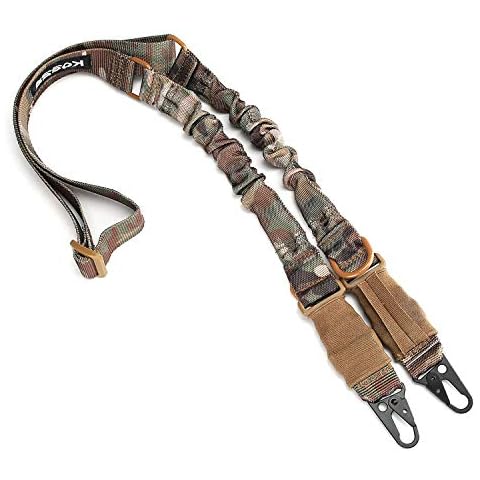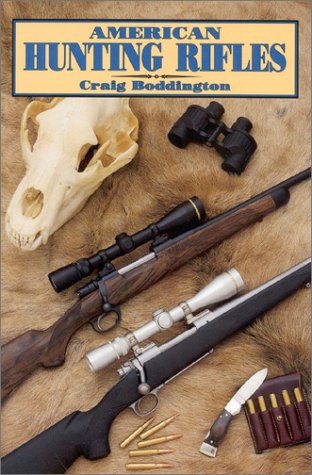
Contents
How to Choose the Ideal Rifle for Big Game Hunting in the West
Choosing the perfect western big game rifle is crucial, just like choosing a life partner. Getting it right is essential to avoid frustration, grief, and failure.
Let’s explore the necessary qualities of an effective hunting rifle before falling for flashy features and exaggerated claims of superior performance.
In a previous article, I discussed the 6.8 Western as my ideal cartridge for all-round Western big game hunting. This narrows down our options to bolt-action rifles, which have been my preferred style for 52 years of hunting. I’ve learned to prioritize size, bulk, and weight for optimal field efficiency. Western hunting often involves long hikes, steep climbs, and sometimes long-distance shots in vast terrain. The 6.8 Western can handle those long shots, so now I need to find a rifle that matches its capabilities.
Why Bolt-Action Rifles are Superior in the West
Bolt actions have dominated hunting rifle sales for 70 years due to their strength, mechanical simplicity, versatility, safety, and ease of maintenance. Their camming action allows them to handle slightly dirty or oversized cases, and their bolts can be removed for easy cleaning of the chamber and barrel. Bolt actions can be chambered for almost any cartridge while remaining sleek and lightweight for easy carrying and quick handling. Their vertically stacked magazines can accommodate aerodynamic, high B.C. bullets safely. Bolt actions can also be equipped with telescopic sights and adjustable triggers for ultimate precision and control. Their one-piece stocks provide strength and stiffness, and can be customized or changed to fit different preferences and shooting styles. Additionally, bolt actions can be operated quietly and with minimal movement, preventing game from getting spooked. I often carry my rifle with an empty chamber, knowing I can quickly load a round if needed.
Choosing Rifle Weight
My extensive experience with ultralight rifles weighing between 4.75 to 6 pounds, even chambered for powerful cartridges like .300 WSM, has shown me that I can tolerate their recoil. These lightweight rifles have also proven their ability to shoot MOA or better accuracy, so I am not afraid of sacrificing weight. However, considering the long-range performance of the 6.8 Western, I don’t want to compromise it with an 18-inch barrel. A 22-inch barrel might be an acceptable compromise, but if I can find a relatively light rifle with a 24-inch barrel, I won’t mind the additional ounce or two in overall weight. Around 7 pounds seems ideal.
Choosing a Stock
While walnut stocks with beautiful markings have always appealed to me aesthetically, they are not practical for the rugged environment of mountain hunting. I don’t want to worry about damaging expensive walnut or compromising accuracy due to exposure to water. Therefore, I prefer synthetic stocks made from stiff, durable materials like hand-laid fiberglass, Kevlar, or carbon.
In terms of design, I prefer a stock with clean lines and minimal moving parts. I don’t need intricate adjustments for length of pull or comb height, which are more relevant in precision target shooting competitions. Instead, I want a stock that won’t get snagged on branches, won’t accumulate debris, is easy and comfortable to carry, seamlessly aligns with my shooting eye and centers it on the scope.
Lastly, I prioritize a stainless-steel barreled action that can withstand rain and snow without issue. I want a rifle that can endure all-day drizzles, be placed on snow, stored in a damp nylon tent, and essentially be ignored for a week or two, without any adverse effects.
The X-Bolt Mountain Pro Long Range

After careful consideration, I have realized that the Browning X-Bolt Mountain Pro Long Range rifle meets all of my requirements. Upon close examination, this factory-made rifle offers most, if not all, of the features I used to pay custom rifle prices to acquire:
1. Stainless steel barreled action coated with glare-free gray Cerakote
2. Free-floated, lapped, 24-inch, 7.5 twist, sporter-contour barrel with a removable brake
3. Stiff, 1-pound, 12-ounce carbon fiber stock with swivel studs and a Picatinny rail
4. Bolt lock when on safe with an unlock button override
5. Chrome-plated trigger adjustable down to 3 pounds
6. Detachable, 3-round rotary magazine for in-line feeding
7. Total weight: 6 pounds, 12 ounces
The X-Bolt’s three-locking lug, 60-degree bolt lift makes it quick to handle. When combined with the compact size of the 6.8 Western cartridge, it becomes even more agile. The slim and trim design of the stock enhances its portability and ease of use. But what about accuracy?
X-Bolt Mountain Pro Accuracy
Due to the current ammo shortage, I was only able to test the rifle with three boxes of Winchester 162-grain Copper Impact ammunition. After bore sighting at 100 yards, my first shot landed just two inches away from the point of aim. With the brake on, the recoil felt similar to that of shooting a .243 Winchester. I then adjusted my aim and fired a 3-shot group that measured 1.12 inches from left to right, with less than 1/4-inch deviation in elevation. Essentially, it was a sub-MOA group with the first factory load tested. While some precision shooters might not be impressed by MOA accuracy, pragmatic hunters understand that an MOA rifle can consistently keep its shots within a 3-inch circle at 300 yards, a 5-inch circle at 500 yards, and an 8.4-inch circle at 800 yards. These dimensions easily cover the vital zone of a pronghorn or even a small Coues whitetail.
I’m confident that a few more break-in shots followed by barrel cleaning will result in the X-Bolt consistently achieving sub-MOA accuracy with the Winchester 162-grain Copper Impact load. Additionally, I plan to test Winchester’s 165-grain Accubond Long Range loads, possibly their 170-grain AccuBonds, and definitely Browning’s 175-grain Sierra Tipped Game Kings. Despite its shorter stature, the 6.8 Western delivers the bullet weights and momentum equivalent to a 7mm magnum.
With these options in my arsenal, I have more than enough firepower to tackle any western big game hunting opportunities this fall and in the future.

A skilled hunter, dedicated conservationist, and advocate for ethical practices. Respected in the hunting community, he balances human activity with environmental preservation.
